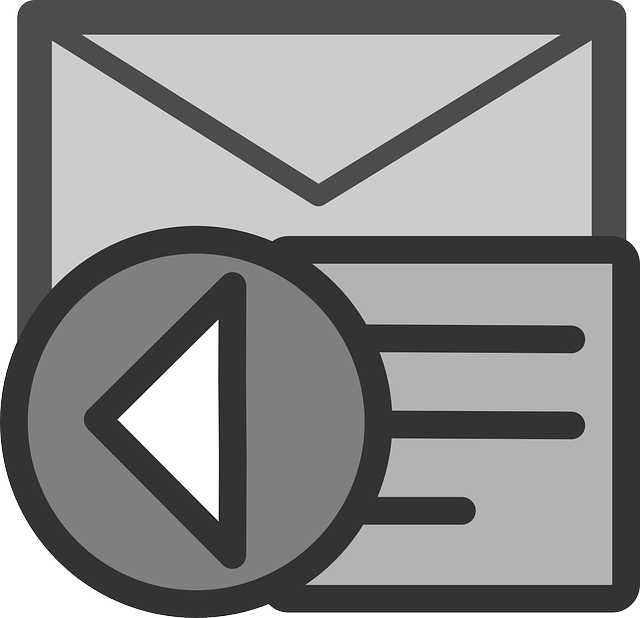Are you tired of sending out mass emails that never seem to get any response? It’s time to stop wasting your time and start targeting your audience with segmented email campaigns.
In today’s fast-paced digital world, generic emails simply won’t cut it anymore. You need to personalize your messages and make them relevant to each individual recipient. That’s where segmentation comes in.
By dividing your email list into smaller, more specific groups based on demographics, interests, or other criteria, you can create targeted campaigns that speak directly to your audience’s needs and desires. This not only increases open rates and click-through rates, but it also allows you to measure and analyze the results of your campaigns, so you can make data-driven decisions for future email marketing strategies.
Don’t settle for one-size-fits-all emails. Start segmenting your email list and see the difference it can make in building meaningful connections with your audience.
Key Takeaways
- Mass emails often do not receive a response
- Segmented email campaigns can target specific audiences
- Personalizing messages increases engagement and relevance
- Segmentation allows for measurement and analysis of campaign results
Understand Your Audience
Understanding your audience is key to creating effective email campaigns that resonate with them. By conducting audience analysis and target market segmentation, you can gain valuable insights into the preferences, behaviors, and needs of your subscribers.
This information allows you to tailor your email content, design, and offers specifically to their interests, increasing the chances of engagement and conversions. Segmenting your email list based on demographics, interests, purchase history, or engagement levels enables you to send more personalized and relevant emails.
This approach not only improves the overall user experience but also boosts open rates, click-through rates, and conversion rates. By understanding your audience and segmenting your email list, you can ensure that your campaigns reach the right people with the right message at the right time.
Segment Your Email List
When segmenting your email list, you should divide it based on demographics to ensure you’re targeting the right audience with your campaigns.
Creating groups based on interests and preferences allows you to send tailored content that resonates with your subscribers.
By segmenting your list, you can deliver more relevant and personalized emails, leading to higher engagement and conversion rates.
Divide Your List Based on Demographics
Start dividing your email list based on demographics to create targeted campaigns that speak directly to your audience’s unique characteristics and needs, ensuring maximum engagement and conversion rates. By segmenting your list, you can tailor your marketing messages to specific groups of customers, increasing the relevance and effectiveness of your campaigns. Consider demographics such as age, gender, location, and income level to gain valuable insights into your audience’s preferences and behaviors.
Table: Demographic Segmentation
| Demographic | Characteristics | Example |
|---|---|---|
| Age | Young adults, middle-aged, seniors | Offering student discounts, retirement planning |
| Gender | Male, female, non-binary | Promoting gender-specific products, gender-neutral messaging |
| Location | Urban, suburban, rural | Targeting local events, highlighting delivery options |
| Income Level | Low, middle, high | Crafting deals for budget-conscious shoppers, luxury offerings |
Segmenting your email list based on demographics allows you to personalize your content and make your customers feel understood and valued. Once you have divided your list, you can move on to creating groups based on interests and preferences, further enhancing the effectiveness of your targeted campaigns.
Create Groups Based on Interests and Preferences
To enhance the effectiveness of your marketing efforts, consider creating groups based on your audience’s interests and preferences. This will allow you to tailor your messaging and offerings to their specific desires and needs. By segmenting your email list this way, you can deliver targeted content that resonates with each group, increasing engagement and conversions.
Targeted content means providing information that is relevant and valuable to each subgroup, increasing the chances of them taking the desired action. Additionally, customized promotions can be created for each group, offering deals or incentives that align with their specific interests. This level of personalization not only improves the customer experience but also boosts the likelihood of conversions.
Now, let’s transition into the next section about how to personalize your emails.
Personalize Your Emails
Make your emails more engaging and effective by personalizing them to suit the interests and preferences of your audience. By tailoring your content to resonate with specific segments of your email list, you can increase engagement and boost conversions.
Start by addressing your subscribers by their first names and craft subject lines that are relevant to their interests. Use the data you’ve collected to send targeted offers, promotions, and recommendations that align with their preferences.
Additionally, consider segmenting your list based on demographics, past purchase behavior, or engagement levels, and create customized email campaigns for each segment.
By personalizing your emails, you show your subscribers that you understand their needs and value their individuality. This will help increase open rates and encourage them to take the desired action.
Increase Open Rates
If you want to increase your email open rates, there are a few key points you should focus on.
First, write compelling subject lines that grab the reader’s attention and entice them to open the email.
Next, optimize your preheader text, the short preview text that appears after the subject line, to provide additional information and create curiosity.
Lastly, make sure to pay attention to the preview text, the snippet of text that is visible in the email client’s preview pane, and use it strategically to further engage your audience.
Write Compelling Subject Lines
Crafting enticing subject lines is essential to capture the attention of your audience and drive higher engagement rates in your email campaigns. When it comes to crafting engaging content, your subject line is your first impression. It needs to be intriguing and compelling enough to make your subscribers want to open your email.
One way to ensure you have an effective subject line is by A/B testing different variations. This allows you to see which subject lines resonate best with your audience and optimize future campaigns. Remember to keep your subject line concise and focused on the value you’re offering.
Don’t be afraid to get creative and experiment with different tactics to see what works best for your subscribers. By optimizing your subject lines, you can increase open rates and set the stage for a successful email campaign.
Now, let’s move on to optimizing preheader text and preview text.
Optimize Preheader Text and Preview Text
Improve your email performance by optimizing the preheader text and preview text to entice your subscribers and encourage them to open your emails.
The preheader text is the short snippet of text that appears below or beside the subject line in the email preview. It serves as a preview of what the email contains and can greatly impact the open rate. Make sure to use this space wisely by including a compelling and concise message that complements your subject line.
Additionally, optimize the preview text, which is the first line of your email. This text should provide a sneak peek into the email content and entice readers to continue reading.
By incorporating these email marketing strategies and designing effective emails, you can maximize your open rates and improve click-through rates, leading to better overall campaign success.
Improve Click-Through Rates
Boost your chances of getting more clicks by tailoring your email campaigns to specific segments of your audience. By segmenting your email list based on demographics, interests, or previous interactions, you can deliver targeted content that resonates with your subscribers. This personalization increases engagement and makes your emails more relevant to each recipient, ultimately leading to higher click-through rates.
When you send emails that are tailored to individual segments, you can include content that speaks directly to their needs and interests. This targeted approach makes your subscribers feel understood and valued, increasing the likelihood that they’ll click on your call-to-action buttons or links.
To further optimize your email campaigns, it’s important to measure and analyze the results. By tracking click-through rates for each segment, you can identify which segments are most responsive to your emails and adjust your strategies accordingly. Understanding what works and what doesn’t will help you continuously improve your email marketing efforts.
In the next section, we’ll discuss how to measure and analyze the results of your segmented email campaigns to further enhance your email marketing strategies.
Measure and Analyze Results
Get ready to dive into the data and uncover valuable insights that’ll supercharge your email marketing game. To truly understand the impact of your targeted campaigns, it’s crucial to measure and analyze the results. Here’s how you can analyze the effectiveness and track the performance of your segmentation efforts:
-
Evaluate open rates: By tracking the number of recipients who open your emails, you can gauge the success of your subject lines and overall content.
-
Monitor click-through rates: Measure the percentage of people who click on links within your emails. This’ll help you determine the effectiveness of your call-to-action and the relevance of your content.
-
Assess conversion rates: Analyze how many recipients take the desired action, such as making a purchase or signing up for a newsletter. This metric indicates the overall success of your campaigns.
-
Use A/B testing: Split your email list into segments and send different versions of your emails to each segment. This’ll allow you to compare the performance of different elements, such as subject lines or visuals, and optimize your campaigns accordingly.
By consistently analyzing these metrics, you can make data-driven decisions to improve your segmentation strategies and achieve better results in your email marketing efforts.
Frequently Asked Questions
What are some common mistakes to avoid when segmenting an email list?
When segmenting an email list, there are common mistakes to avoid for effective email personalization.
One mistake is not properly understanding your audience and their preferences, leading to irrelevant content being sent.
Another mistake is over-segmentation, creating too many small segments that are difficult to manage.
Additionally, failing to regularly clean and update your email list can result in sending messages to invalid or inactive email addresses.
To ensure successful segmentation, consider these best practices for email personalization.
How can I effectively personalize my emails without sounding robotic or generic?
Looking to avoid sounding robotic or generic in your emails? Wondering how to effectively personalize your messages?
Well, here’s a question for you: How can you truly connect with your audience if your emails lack a personal touch?
To avoid this, try using personalization techniques like addressing recipients by name and tailoring content to their interests.
Additionally, craft engaging emails by using conversational language, storytelling, and adding a touch of humor.
These tips will help you create more meaningful connections with your subscribers.
What strategies can I implement to increase my email open rates?
To increase your email open rates, you can implement several strategies.
Firstly, focus on writing compelling subject lines that grab your audience’s attention and create curiosity. Use power words, personalization, and urgency to make your emails stand out.
Secondly, don’t underestimate the role of email design in increasing open rates. Make sure your emails are visually appealing, mobile-friendly, and easy to read.
Incorporating these strategies will help you boost your email open rates and engage your audience effectively.
How can I improve my click-through rates in email campaigns?
To improve your click-through rates in email campaigns and increase engagement, focus on creating compelling and personalized content that resonates with your audience. Use catchy subject lines and clear call-to-actions to entice readers to click.
Segment your email list based on demographics, preferences, and past behavior to send targeted and relevant messages. A/B test your emails to optimize performance and analyze the results to make data-driven improvements.
By implementing these strategies, you can effectively increase conversion rates and drive more clicks.
What are some key metrics to look for when measuring and analyzing email marketing results?
When measuring and analyzing email marketing results, two key metrics to look for are email engagement and conversion rates.
Did you know that personalized emails have a 14% higher click-through rate than non-personalized ones? This statistic shows the power of tailoring your email campaigns to your audience’s needs and preferences.
By focusing on email engagement, such as open rates and click-through rates, and conversion rates, you can gain valuable insights into the effectiveness of your email marketing efforts.
Conclusion
So, now you understand the importance of segmentation in email list building. By taking the time to understand your audience and segmenting your email list, you can create targeted campaigns that will resonate with your subscribers.
This will not only increase your open rates but also improve your click-through rates. And here’s an interesting statistic for you: According to a study, segmented email campaigns can generate a 760% increase in revenue.
So, start segmenting your email list today and watch your results soar!




